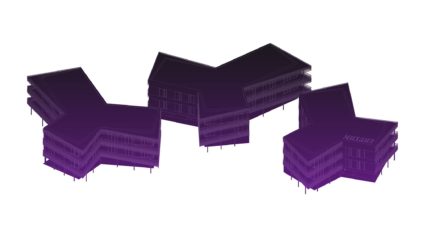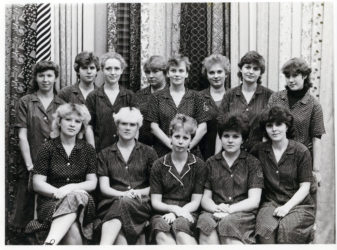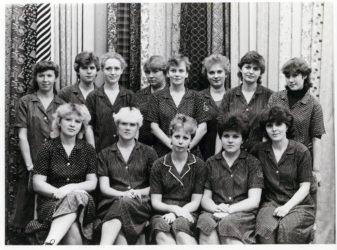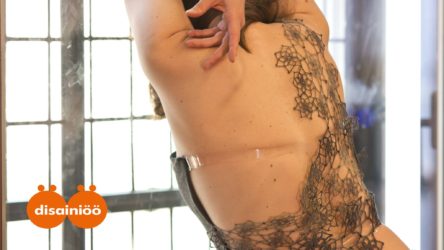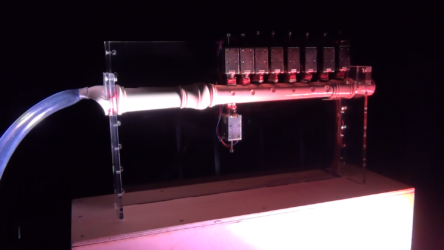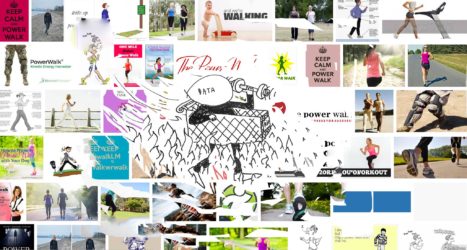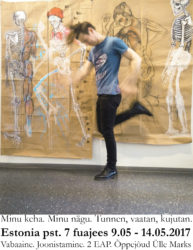Exhibitions
25.09.2017 — 29.09.2017
Project “Brilliant Estonian Item” – students designed
“Brilliant Estonian item” is a collaboration project between product-, textile- and leather design specialisations in the faculty of design at Estonian Academy of Arts. The project focuses on searching elements and narratives to characterize Estonia to combine those into widely recognisable and thoughtful small objects – Estonian items.
The aim of this project is to gather inspiration from local cultural surrounding and assemble it into product prototypes with (applied) art value – outcome will be products, accessories, small installations etc. Articles which by telling a story about our past, present and future, are suitable gift for ourselves and to our foreign guests.
Read more about the projects: https://www.facebook.com/projektHeaEestiAsi/
It is possible to learn more about the products on XII Tallinn Design Festival, 25.09.–01.10. in Noblessneri Valukoda (Tööstuse 48)
Official opening of the exhibition is on Thursday 28.09. at 17.00-18.00. You are welcome!
Project “Brilliant Estonian Object” is supported by EV100 and it is part of EV100 official art program „Sada kunstimaastikku“
-> https://www.ev100.ee/et/ev100-kunstiprogramm-sada-kunstimaastikku
-> http://www.cca.ee/ev100.
Project “Brilliant Estonian Item” – students designed
Monday 25 September, 2017 — Friday 29 September, 2017
“Brilliant Estonian item” is a collaboration project between product-, textile- and leather design specialisations in the faculty of design at Estonian Academy of Arts. The project focuses on searching elements and narratives to characterize Estonia to combine those into widely recognisable and thoughtful small objects – Estonian items.
The aim of this project is to gather inspiration from local cultural surrounding and assemble it into product prototypes with (applied) art value – outcome will be products, accessories, small installations etc. Articles which by telling a story about our past, present and future, are suitable gift for ourselves and to our foreign guests.
Read more about the projects: https://www.facebook.com/projektHeaEestiAsi/
It is possible to learn more about the products on XII Tallinn Design Festival, 25.09.–01.10. in Noblessneri Valukoda (Tööstuse 48)
Official opening of the exhibition is on Thursday 28.09. at 17.00-18.00. You are welcome!
Project “Brilliant Estonian Object” is supported by EV100 and it is part of EV100 official art program „Sada kunstimaastikku“
-> https://www.ev100.ee/et/ev100-kunstiprogramm-sada-kunstimaastikku
-> http://www.cca.ee/ev100.
20.09.2017 — 24.09.2017
Gallery Mihhail new exhibition opening!
On Wednesday (20.09), 7PM, Mihhail gallery will open the exhibition “Sewage observation tower in baroque purple”. What is going to be seen is everyday poetry and exuberance through fragments, stains, removals and half-finished interior decoration. The works are connected by the living environment of Pirita, magical realism and everyday aesthetics, in-progress repairs, wiring from the walls and ceilings hanging out. Quality parquet where there should be a kitchen. This kind of contemporary art is a non-space, it is a homogeneous dimension of a person, and just like at home, art acquires architectural typologies.
What’s under the floor is another floor made of cashew. Later that day I was sitting in the garden drinking energy drinks, looking up stuff. This had been a dinner party, but I fucked it up. Another one. I really hoped for this home to stay gleaming, but now it has stains on it. I see traces of living, some parts of me are sad, buyer’s remorse, I guess. My home is your home. Mundane magic or domesticated aesthetics, however you want to take it. The belief in privacy, carried around everywhere. There’s always something a little extra. We are just visiting.
Artists participating Kadi Adrikorn, Spencer M. A., Vilen Künnapu, Anna Mari Liivrand, Joosep Maripuu, Eva Mustonen, Ann Paljuväli, Tomáš Roček, AW stuff, Anni Kivisto & Kirke Talu, Roman-Sten Tõnissoo.
The exhibition is part of the gallery programme of Tallinn Photomonth ’17 contemporary art biennial.
Graphic design: Tarmo Kübard
Installation views: Roman-Sten Tõnissoo
Coordinators: Madli Ehasalu, Sven Parker
Thank you Rand ja Tuulberg, Ober-Haus Kinnisvara, Merilin Paart, Hannus Luure, Eda Tuulberg, Lauri Tuulberg, Salto Architects
When: 20.09.2017 kell 19:00
Open: 21. Sept – 24. Sept from 3 pm to 8 pm and
28. Sept – 1. Oct from 3 pm to 8 pm
Where: Kosemetsa 11 Tallinn, http://www.vallikraavi.ee/projects/kosemetsa-91113/
Bus number 5, stop at Haljas tee
Contact: +372 5621 8422
Gallery Mihhail new exhibition opening!
Wednesday 20 September, 2017 — Sunday 24 September, 2017
On Wednesday (20.09), 7PM, Mihhail gallery will open the exhibition “Sewage observation tower in baroque purple”. What is going to be seen is everyday poetry and exuberance through fragments, stains, removals and half-finished interior decoration. The works are connected by the living environment of Pirita, magical realism and everyday aesthetics, in-progress repairs, wiring from the walls and ceilings hanging out. Quality parquet where there should be a kitchen. This kind of contemporary art is a non-space, it is a homogeneous dimension of a person, and just like at home, art acquires architectural typologies.
What’s under the floor is another floor made of cashew. Later that day I was sitting in the garden drinking energy drinks, looking up stuff. This had been a dinner party, but I fucked it up. Another one. I really hoped for this home to stay gleaming, but now it has stains on it. I see traces of living, some parts of me are sad, buyer’s remorse, I guess. My home is your home. Mundane magic or domesticated aesthetics, however you want to take it. The belief in privacy, carried around everywhere. There’s always something a little extra. We are just visiting.
Artists participating Kadi Adrikorn, Spencer M. A., Vilen Künnapu, Anna Mari Liivrand, Joosep Maripuu, Eva Mustonen, Ann Paljuväli, Tomáš Roček, AW stuff, Anni Kivisto & Kirke Talu, Roman-Sten Tõnissoo.
The exhibition is part of the gallery programme of Tallinn Photomonth ’17 contemporary art biennial.
Graphic design: Tarmo Kübard
Installation views: Roman-Sten Tõnissoo
Coordinators: Madli Ehasalu, Sven Parker
Thank you Rand ja Tuulberg, Ober-Haus Kinnisvara, Merilin Paart, Hannus Luure, Eda Tuulberg, Lauri Tuulberg, Salto Architects
When: 20.09.2017 kell 19:00
Open: 21. Sept – 24. Sept from 3 pm to 8 pm and
28. Sept – 1. Oct from 3 pm to 8 pm
Where: Kosemetsa 11 Tallinn, http://www.vallikraavi.ee/projects/kosemetsa-91113/
Bus number 5, stop at Haljas tee
Contact: +372 5621 8422
08.09.2017 — 08.10.2017
London-based Estonian artist Maria Kapajeva’s largest solo exhibition thus far, entitled The Dream is Wonderful, Yet Unclear, is opening at EAA Narva Art Residency.
resAs part of the Tallinn Photomonth programme, London-based Estonian artist Maria
Kapajeva returns to Narva Art Residency with a solo exhibition studying the social
legacy of Krenholm. For 150 years, Krenholm – the textile manufacture that was
declared bankrupt in 2010 – was the most important enterprise in Narva, shaping the
social and cultural as well as architectural atmosphere of the city. The exhibition
focuses on the mill in the late socialist period, when its workshops employed a
collective of 12,000 mainly female workers.
Inspiration for the exhibition was drawn from interviews conducted with former
workers of the mill and from the digitised family albums, diaries, and memorabilia
gathered by the artist during these interviews. By placing this material into the context
of a multimedia contemporary art exhibition, Kapajeva makes the history of the local
working class visible and enhances it with all of the artistic means at her disposal. The
viewer is presented a mill that is filled with lively female collectives and the deafening
rhythm of the looms, but which still seems like a bright and distant dream in today’s
competitive world, where the collective spirit and sense of togetherness between
women is challenged by the individualist and competition-based aims of global
capitalism.
Maria Kapajeva is a London-based Estonian artist who was born in Narva and has
exhibited her work internationally for the last 10 years. As the daughter of a designer
at Krenholm, she spent her childhood at the mill, drawing fabric patterns and
dreaming about the profession of a textile artist. The current exhibition thus takes a
distinctly personal approach, although the main topics of Kapajeva’s art are also
present: appropriation of found objects and highlighting of peripheral histories, use of
textile techniques and focusing on the representation of women, heightened sensitivity
towards social and political matters, and specifically East European feminism.
The exhibition takes its name from March of Enthusiasts, the signature song from the
soundtrack of the Soviet film The Bright Way (1940). This musical film, which starred
the Soviet cinema icon Ljubov Orlova in the role of a female weaver, inspired one of
the Krenholm’s weavers to seek employment at the mill after World War II. The
opening work of the exhibition, which bears the same name and performs reenactments
of the famous film, compares a woman’s loneliness then and now and
presents to the public for the first time the collaboration of Maria Kapajeva and dance
artist Maarja Tõnisson in the abandoned interior spaces of the former textile mill.
The exhibition is curated by Tallinn-based Liisa Kaljula, whose interests include
socialist-era art and post-socialist contemporary art dealing with the recent history of
its own region.
The exhibition is accompanied by a diverse trilingual public programme, including
Maria Kapajeva’s master class, artist talks, and curator’s tour, as well as an
educational programme for the schools of Narva and a lecture by Reverse Resources
on contemporary global textile production.
The opening of the exhibition will take place 8 September at 6 pm on the ground floor
of the Narva Art Residency at Joala 18.
On 8 September a special coach will be organized from Tallinn to Narva for the
opening of the exhibition. The coach leaves at 2 pm from the Russian Cultural Centre
at Mere pst 5. For further information and registration: koordinaator@fotokuu.ee.
The exhibition is sponsored by the Cultural Endowment of Estonia, Estonian Academy
of Arts, and Narva Gate OÜ. The entire public programme is supported by The British
Council in Estonia.
Maria Kapajeva’s solo exhibition, The Dream is Wonderful, Yet Unclear, will be open at
the Narva Art Residency until 8 October 2017 (T–S 12–6 pm).
Further information:
Liisa Kaljula
Exhibition curator
5162688
Maria Kapajeva
www.mariakapajeva.com
Tallinn Photomonth
www.fotokuu.ee
London-based Estonian artist Maria Kapajeva’s largest solo exhibition thus far, entitled The Dream is Wonderful, Yet Unclear, is opening at EAA Narva Art Residency.
Friday 08 September, 2017 — Sunday 08 October, 2017
resAs part of the Tallinn Photomonth programme, London-based Estonian artist Maria
Kapajeva returns to Narva Art Residency with a solo exhibition studying the social
legacy of Krenholm. For 150 years, Krenholm – the textile manufacture that was
declared bankrupt in 2010 – was the most important enterprise in Narva, shaping the
social and cultural as well as architectural atmosphere of the city. The exhibition
focuses on the mill in the late socialist period, when its workshops employed a
collective of 12,000 mainly female workers.
Inspiration for the exhibition was drawn from interviews conducted with former
workers of the mill and from the digitised family albums, diaries, and memorabilia
gathered by the artist during these interviews. By placing this material into the context
of a multimedia contemporary art exhibition, Kapajeva makes the history of the local
working class visible and enhances it with all of the artistic means at her disposal. The
viewer is presented a mill that is filled with lively female collectives and the deafening
rhythm of the looms, but which still seems like a bright and distant dream in today’s
competitive world, where the collective spirit and sense of togetherness between
women is challenged by the individualist and competition-based aims of global
capitalism.
Maria Kapajeva is a London-based Estonian artist who was born in Narva and has
exhibited her work internationally for the last 10 years. As the daughter of a designer
at Krenholm, she spent her childhood at the mill, drawing fabric patterns and
dreaming about the profession of a textile artist. The current exhibition thus takes a
distinctly personal approach, although the main topics of Kapajeva’s art are also
present: appropriation of found objects and highlighting of peripheral histories, use of
textile techniques and focusing on the representation of women, heightened sensitivity
towards social and political matters, and specifically East European feminism.
The exhibition takes its name from March of Enthusiasts, the signature song from the
soundtrack of the Soviet film The Bright Way (1940). This musical film, which starred
the Soviet cinema icon Ljubov Orlova in the role of a female weaver, inspired one of
the Krenholm’s weavers to seek employment at the mill after World War II. The
opening work of the exhibition, which bears the same name and performs reenactments
of the famous film, compares a woman’s loneliness then and now and
presents to the public for the first time the collaboration of Maria Kapajeva and dance
artist Maarja Tõnisson in the abandoned interior spaces of the former textile mill.
The exhibition is curated by Tallinn-based Liisa Kaljula, whose interests include
socialist-era art and post-socialist contemporary art dealing with the recent history of
its own region.
The exhibition is accompanied by a diverse trilingual public programme, including
Maria Kapajeva’s master class, artist talks, and curator’s tour, as well as an
educational programme for the schools of Narva and a lecture by Reverse Resources
on contemporary global textile production.
The opening of the exhibition will take place 8 September at 6 pm on the ground floor
of the Narva Art Residency at Joala 18.
On 8 September a special coach will be organized from Tallinn to Narva for the
opening of the exhibition. The coach leaves at 2 pm from the Russian Cultural Centre
at Mere pst 5. For further information and registration: koordinaator@fotokuu.ee.
The exhibition is sponsored by the Cultural Endowment of Estonia, Estonian Academy
of Arts, and Narva Gate OÜ. The entire public programme is supported by The British
Council in Estonia.
Maria Kapajeva’s solo exhibition, The Dream is Wonderful, Yet Unclear, will be open at
the Narva Art Residency until 8 October 2017 (T–S 12–6 pm).
Further information:
Liisa Kaljula
Exhibition curator
5162688
Maria Kapajeva
www.mariakapajeva.com
Tallinn Photomonth
www.fotokuu.ee
08.09.2017 — 08.10.2017
London-based Estonian artist Maria Kapajeva’s largest solo exhibition thus far, entitled The Dream is Wonderful, Yet Unclear, is opening at EAA Narva Art Residency.
As part of the Tallinn Photomonth programme, London-based Estonian artist Maria
Kapajeva returns to Narva Art Residency with a solo exhibition studying the social
legacy of Krenholm. For 150 years, Krenholm – the textile manufacture that was
declared bankrupt in 2010 – was the most important enterprise in Narva, shaping the
social and cultural as well as architectural atmosphere of the city. The exhibition
focuses on the mill in the late socialist period, when its workshops employed a
collective of 12,000 mainly female workers.
Inspiration for the exhibition was drawn from interviews conducted with former
workers of the mill and from the digitised family albums, diaries, and memorabilia
gathered by the artist during these interviews. By placing this material into the context
of a multimedia contemporary art exhibition, Kapajeva makes the history of the local
working class visible and enhances it with all of the artistic means at her disposal. The
viewer is presented a mill that is filled with lively female collectives and the deafening
rhythm of the looms, but which still seems like a bright and distant dream in today’s
competitive world, where the collective spirit and sense of togetherness between
women is challenged by the individualist and competition-based aims of global
capitalism.
Maria Kapajeva is a London-based Estonian artist who was born in Narva and has
exhibited her work internationally for the last 10 years. As the daughter of a designer
at Krenholm, she spent her childhood at the mill, drawing fabric patterns and
dreaming about the profession of a textile artist. The current exhibition thus takes a
distinctly personal approach, although the main topics of Kapajeva’s art are also
present: appropriation of found objects and highlighting of peripheral histories, use of
textile techniques and focusing on the representation of women, heightened sensitivity
towards social and political matters, and specifically East European feminism.
The exhibition takes its name from March of Enthusiasts, the signature song from the
soundtrack of the Soviet film The Bright Way (1940). This musical film, which starred
the Soviet cinema icon Ljubov Orlova in the role of a female weaver, inspired one of
the Krenholm’s weavers to seek employment at the mill after World War II. The
opening work of the exhibition, which bears the same name and performs reenactments
of the famous film, compares a woman’s loneliness then and now and
presents to the public for the first time the collaboration of Maria Kapajeva and dance
artist Maarja Tõnisson in the abandoned interior spaces of the former textile mill.
The exhibition is curated by Tallinn-based Liisa Kaljula, whose interests include
socialist-era art and post-socialist contemporary art dealing with the recent history of
its own region.
The exhibition is accompanied by a diverse trilingual public programme, including
Maria Kapajeva’s master class, artist talks, and curator’s tour, as well as an
educational programme for the schools of Narva and a lecture by Reverse Resources
on contemporary global textile production.
The opening of the exhibition will take place 8 September at 6 pm on the ground floor
of the Narva Art Residency at Joala 18.
On 8 September a special coach will be organized from Tallinn to Narva for the
opening of the exhibition. The coach leaves at 2 pm from the Russian Cultural Centre
at Mere pst 5. For further information and registration: koordinaator@fotokuu.ee.
The exhibition is sponsored by the Cultural Endowment of Estonia, Estonian Academy
of Arts, and Narva Gate OÜ. The entire public programme is supported by The British
Council in Estonia.
Maria Kapajeva’s solo exhibition, The Dream is Wonderful, Yet Unclear, will be open at
the Narva Art Residency until 8 October 2017 (T–S 12–6 pm).
Further information:
Liisa Kaljula
Exhibition curator
5162688
Maria Kapajeva
www.mariakapajeva.com
Tallinn Photomonth
www.fotokuu.ee
London-based Estonian artist Maria Kapajeva’s largest solo exhibition thus far, entitled The Dream is Wonderful, Yet Unclear, is opening at EAA Narva Art Residency.
Friday 08 September, 2017 — Sunday 08 October, 2017
As part of the Tallinn Photomonth programme, London-based Estonian artist Maria
Kapajeva returns to Narva Art Residency with a solo exhibition studying the social
legacy of Krenholm. For 150 years, Krenholm – the textile manufacture that was
declared bankrupt in 2010 – was the most important enterprise in Narva, shaping the
social and cultural as well as architectural atmosphere of the city. The exhibition
focuses on the mill in the late socialist period, when its workshops employed a
collective of 12,000 mainly female workers.
Inspiration for the exhibition was drawn from interviews conducted with former
workers of the mill and from the digitised family albums, diaries, and memorabilia
gathered by the artist during these interviews. By placing this material into the context
of a multimedia contemporary art exhibition, Kapajeva makes the history of the local
working class visible and enhances it with all of the artistic means at her disposal. The
viewer is presented a mill that is filled with lively female collectives and the deafening
rhythm of the looms, but which still seems like a bright and distant dream in today’s
competitive world, where the collective spirit and sense of togetherness between
women is challenged by the individualist and competition-based aims of global
capitalism.
Maria Kapajeva is a London-based Estonian artist who was born in Narva and has
exhibited her work internationally for the last 10 years. As the daughter of a designer
at Krenholm, she spent her childhood at the mill, drawing fabric patterns and
dreaming about the profession of a textile artist. The current exhibition thus takes a
distinctly personal approach, although the main topics of Kapajeva’s art are also
present: appropriation of found objects and highlighting of peripheral histories, use of
textile techniques and focusing on the representation of women, heightened sensitivity
towards social and political matters, and specifically East European feminism.
The exhibition takes its name from March of Enthusiasts, the signature song from the
soundtrack of the Soviet film The Bright Way (1940). This musical film, which starred
the Soviet cinema icon Ljubov Orlova in the role of a female weaver, inspired one of
the Krenholm’s weavers to seek employment at the mill after World War II. The
opening work of the exhibition, which bears the same name and performs reenactments
of the famous film, compares a woman’s loneliness then and now and
presents to the public for the first time the collaboration of Maria Kapajeva and dance
artist Maarja Tõnisson in the abandoned interior spaces of the former textile mill.
The exhibition is curated by Tallinn-based Liisa Kaljula, whose interests include
socialist-era art and post-socialist contemporary art dealing with the recent history of
its own region.
The exhibition is accompanied by a diverse trilingual public programme, including
Maria Kapajeva’s master class, artist talks, and curator’s tour, as well as an
educational programme for the schools of Narva and a lecture by Reverse Resources
on contemporary global textile production.
The opening of the exhibition will take place 8 September at 6 pm on the ground floor
of the Narva Art Residency at Joala 18.
On 8 September a special coach will be organized from Tallinn to Narva for the
opening of the exhibition. The coach leaves at 2 pm from the Russian Cultural Centre
at Mere pst 5. For further information and registration: koordinaator@fotokuu.ee.
The exhibition is sponsored by the Cultural Endowment of Estonia, Estonian Academy
of Arts, and Narva Gate OÜ. The entire public programme is supported by The British
Council in Estonia.
Maria Kapajeva’s solo exhibition, The Dream is Wonderful, Yet Unclear, will be open at
the Narva Art Residency until 8 October 2017 (T–S 12–6 pm).
Further information:
Liisa Kaljula
Exhibition curator
5162688
Maria Kapajeva
www.mariakapajeva.com
Tallinn Photomonth
www.fotokuu.ee
25.09.2017 — 01.10.2017
Textile Futures exhibition and afternoon
25.09 – 01.10 Exhibition: https://www.facebook.com/events/853305954845876/
29.09 15.00 Talk: https://www.facebook.com/events/123706798363506/
The ways that materials and garments are created, are in a constant change. There are continuous dialogues between the appearance and functionality of the clothing. Sustainable design examples emerge as alternatives next to the mass production, and technology integrates into garment production means in different levels. Exploring alternative futures for textile and garment production, the exhibition presents examples from diverse interpretations of connecting textiles with technology. Textile Futures talk offers the opportunity to meet with the designers, artists and technologists behind the exhibition work to understand more their vision for the textile futures.
Anja Hertenberger (Holland) explores how technology can help us connect to our bodies and maximize our senses. Tara St James (USA) introduces sustainability in fashion. Oscar Tomico (Holland/Spain) offers insights into bringing technology close to the body. Kristi Kuusk (Estonia) wonders about the exhibition “Textile Futures” and talks to the Fashion & Textile MA students of Estonian Academy of Arts about their work at the exhibition.
Q&A with designers.
Event is free of charge, but please register:
RSVP kristi@spell.ee
More info: http://www.disainioo.ee/2017-program/textile-futures-talks
Textile Futures exhibition and afternoon
Monday 25 September, 2017 — Sunday 01 October, 2017
25.09 – 01.10 Exhibition: https://www.facebook.com/events/853305954845876/
29.09 15.00 Talk: https://www.facebook.com/events/123706798363506/
The ways that materials and garments are created, are in a constant change. There are continuous dialogues between the appearance and functionality of the clothing. Sustainable design examples emerge as alternatives next to the mass production, and technology integrates into garment production means in different levels. Exploring alternative futures for textile and garment production, the exhibition presents examples from diverse interpretations of connecting textiles with technology. Textile Futures talk offers the opportunity to meet with the designers, artists and technologists behind the exhibition work to understand more their vision for the textile futures.
Anja Hertenberger (Holland) explores how technology can help us connect to our bodies and maximize our senses. Tara St James (USA) introduces sustainability in fashion. Oscar Tomico (Holland/Spain) offers insights into bringing technology close to the body. Kristi Kuusk (Estonia) wonders about the exhibition “Textile Futures” and talks to the Fashion & Textile MA students of Estonian Academy of Arts about their work at the exhibition.
Q&A with designers.
Event is free of charge, but please register:
RSVP kristi@spell.ee
More info: http://www.disainioo.ee/2017-program/textile-futures-talks
05.07.2017 — 08.07.2017
Impro-Recorder-Bot at SMC conference
Hans-Gunter Lock participates at SMC (Sound and Music Computation) conference with the sound and light installation “ImproRecorderBot”, which takes place from July 4th to 8th at Aalto University (Espoo, Finland). The main object is an automatic recorder. which is placed in an environment of electronic sounds and colored lights. Have a view to the demonstration video:
Impro-Recorder-Bot at SMC conference
Wednesday 05 July, 2017 — Saturday 08 July, 2017
Hans-Gunter Lock participates at SMC (Sound and Music Computation) conference with the sound and light installation “ImproRecorderBot”, which takes place from July 4th to 8th at Aalto University (Espoo, Finland). The main object is an automatic recorder. which is placed in an environment of electronic sounds and colored lights. Have a view to the demonstration video:
03.06.2017
Estonia’s most successful commercial gallery of contemporary art starts its second season!
Last summer the travelling gallery met more than 500 new art friends and found a home for 50 artworks. This Saturday at 2pm everyone is invited to the season opening event in the forecourt of gallery ISFAG (Põhja pst 35, right next to EKKM)
During the festivities Kirill Tulin will replace the gallery’s broken clutch, Camille Laurelli will open a one-day exhibition and music will be selected by this season’s resident artist Art Nõukas. As always, artworks by the gallery artists Art ja Helena, Rosa-Violetta Grötsch, Johnson&Johnson, Camille Laurelli, Anna Mari Liivrand and Hanna Piksarv will be sold. A new addition to the line-up is Liina Pääsuke, whose works will be available for purchase starting this Saturday.
After touring fairs and festivals in 2016, the gallery will now set its sights on Estonia’s neighbours. This summer the gallery will host Art Nõukas’ film project “Lost and found cinema” visiting different art centres across the Baltics, but none of the capital cities. “Whether travelling in Estonia with a foreign artist or taking a local artist abroad, the aim is still to offer an alternative platform for experiencing art in a field that is largely concentrated around capitals,” comments gallerist and project initiator Siim Preiman, “that’s why this year we’ll be tracking down other small initiatives like ourselves, share each other’s experiences and hopefully meet each other’s friends.”
The opening event this Saturday is the first chance this year to be a part of the gallery’s activities and to hear the latest whispers about the future. If all goes according to plan, the summer tour will take place in the second half of July.
Kirill Tulin (b 1989) is an artist living in Tallinn who has not graduated from the Academy of Arts or any other university. He constantly questions the role of traditional galleries and other art institutions. In February 2017, he initiated the performative action “We are about to come up with a title, please bear with us” in Tallinn Art Hall that gave visitors a chance to see how exhibitions are made.
Camille Laurelli (b 1981) is a French-born artist, currently living and working in Tallinn. He has studied in art schools in Annecy and Grenoble. Laurelli started his career as a photo artist but now merges different areas of art in his practice and questions the value of art in a world increasingly overtaken by technology. He has participated in the exhibitions “Side effects” and “& So On & So Forth”, both at EKKM in 2013. In 2016, he curated the show “Infinite Lives” with co-curator Nicolas Audureau at Tallinn City Gallery.
Art Nõukas (b 1992) is an artist living and working in Tallinn. He graduated from the sculpture and installation department at the Estonian Academy of Arts in 2017. In his installations he largely relies on visuals and methods borrowed from films and often positions the silver screen at the centre of his dramatic scenographies. His latest solo show “Oh, why do we play this game?” with Helena Keskküla, took place at Hobusepea gallery in spring 2016.
Facebook event: https://www.facebook.com/events/212457265938217
Thanks: Eesti Kultuurkapital, Tamara Luuk, Villem Säre
Image: Johanna Heikkilä “Nähdäkseni sinut”. Exhibition view. galerii galerii 2016.
Galerii galerii is a travelling contemporary art gallery built in the back of a ‘91 Transit van that started operating in 2016. The gallery hosts solo shows by young international artists, represents a growing number of more and less known contemporary artists and actively takes art to new publics. During its first season galerii galerii toured fairs and festivals all over Estonia, visiting the towns of Rakvere, Võru, Viljandi and Toila. In 2017 the gallery aims to visit art centres in Estonia, Latvia and Lithuania.
More information:
Siim Preiman
gallerist
+372 53432526
galerist@galeriigalerii.ee
www.galeriigalerii.ee
Estonia’s most successful commercial gallery of contemporary art starts its second season!
Saturday 03 June, 2017
Last summer the travelling gallery met more than 500 new art friends and found a home for 50 artworks. This Saturday at 2pm everyone is invited to the season opening event in the forecourt of gallery ISFAG (Põhja pst 35, right next to EKKM)
During the festivities Kirill Tulin will replace the gallery’s broken clutch, Camille Laurelli will open a one-day exhibition and music will be selected by this season’s resident artist Art Nõukas. As always, artworks by the gallery artists Art ja Helena, Rosa-Violetta Grötsch, Johnson&Johnson, Camille Laurelli, Anna Mari Liivrand and Hanna Piksarv will be sold. A new addition to the line-up is Liina Pääsuke, whose works will be available for purchase starting this Saturday.
After touring fairs and festivals in 2016, the gallery will now set its sights on Estonia’s neighbours. This summer the gallery will host Art Nõukas’ film project “Lost and found cinema” visiting different art centres across the Baltics, but none of the capital cities. “Whether travelling in Estonia with a foreign artist or taking a local artist abroad, the aim is still to offer an alternative platform for experiencing art in a field that is largely concentrated around capitals,” comments gallerist and project initiator Siim Preiman, “that’s why this year we’ll be tracking down other small initiatives like ourselves, share each other’s experiences and hopefully meet each other’s friends.”
The opening event this Saturday is the first chance this year to be a part of the gallery’s activities and to hear the latest whispers about the future. If all goes according to plan, the summer tour will take place in the second half of July.
Kirill Tulin (b 1989) is an artist living in Tallinn who has not graduated from the Academy of Arts or any other university. He constantly questions the role of traditional galleries and other art institutions. In February 2017, he initiated the performative action “We are about to come up with a title, please bear with us” in Tallinn Art Hall that gave visitors a chance to see how exhibitions are made.
Camille Laurelli (b 1981) is a French-born artist, currently living and working in Tallinn. He has studied in art schools in Annecy and Grenoble. Laurelli started his career as a photo artist but now merges different areas of art in his practice and questions the value of art in a world increasingly overtaken by technology. He has participated in the exhibitions “Side effects” and “& So On & So Forth”, both at EKKM in 2013. In 2016, he curated the show “Infinite Lives” with co-curator Nicolas Audureau at Tallinn City Gallery.
Art Nõukas (b 1992) is an artist living and working in Tallinn. He graduated from the sculpture and installation department at the Estonian Academy of Arts in 2017. In his installations he largely relies on visuals and methods borrowed from films and often positions the silver screen at the centre of his dramatic scenographies. His latest solo show “Oh, why do we play this game?” with Helena Keskküla, took place at Hobusepea gallery in spring 2016.
Facebook event: https://www.facebook.com/events/212457265938217
Thanks: Eesti Kultuurkapital, Tamara Luuk, Villem Säre
Image: Johanna Heikkilä “Nähdäkseni sinut”. Exhibition view. galerii galerii 2016.
Galerii galerii is a travelling contemporary art gallery built in the back of a ‘91 Transit van that started operating in 2016. The gallery hosts solo shows by young international artists, represents a growing number of more and less known contemporary artists and actively takes art to new publics. During its first season galerii galerii toured fairs and festivals all over Estonia, visiting the towns of Rakvere, Võru, Viljandi and Toila. In 2017 the gallery aims to visit art centres in Estonia, Latvia and Lithuania.
More information:
Siim Preiman
gallerist
+372 53432526
galerist@galeriigalerii.ee
www.galeriigalerii.ee
01.06.2017
Neanderthal Cave School: Powerwalking and Mindfulness for the Socially Agnostic Artist
June 1, 6:00pm
Puänt Book Store (Pärnu mnt 4)
Hedi Jaansoo, Kristel Raesaar, Pire Sova, Viktor Gurov
Neanderthal Cave School invites you to join us for a performative walking and mindfulness session on Thursday, June 1, at 6:00pm.
The upcoming session is the first public scetch for Neanderthal Cave School’s exhibition-residency at The Contemporary Art Museum Estonia, due to start in September.
If the artworld is a model of reality, then how do we, artists, participate in creating social and political reality? Now that criticality has become a set of tropes employed to signal belonging to a professional inner circle rather than a practice addressing social issues, does contemporary art still hold any potential as a prototype for a new reality? How to be together when our selves have broken down into various user profiles?
We’ll meet at 6:00pm in front of Puänt book store (Pärnu mnt 4). The session will begin with a brisk walk and will continue with a guided meditation. In the end of the session, a discussion over refreshments will take place.
Please dress comfortably. You may bring walking poles, dumbbells or sandbags. We recommend that you bring a small plaid, blanket, shawl or just a warm cardigan for meditation. Attention: the guided meditation will take place in Estonian, so for non-Estonian speakers, this will be a chance to experience an immersive language listening session.
Operating since 2015, Neanderthal Cave School is an art project, using artists, gallery spaces, visitors, control and togetherness amongst other things as materials.
Further information: neandertalcaveschool@gmail.com
Fb event: http://bit.ly/2rfhuff
Neanderthal Cave School: Powerwalking and Mindfulness for the Socially Agnostic Artist
Thursday 01 June, 2017
June 1, 6:00pm
Puänt Book Store (Pärnu mnt 4)
Hedi Jaansoo, Kristel Raesaar, Pire Sova, Viktor Gurov
Neanderthal Cave School invites you to join us for a performative walking and mindfulness session on Thursday, June 1, at 6:00pm.
The upcoming session is the first public scetch for Neanderthal Cave School’s exhibition-residency at The Contemporary Art Museum Estonia, due to start in September.
If the artworld is a model of reality, then how do we, artists, participate in creating social and political reality? Now that criticality has become a set of tropes employed to signal belonging to a professional inner circle rather than a practice addressing social issues, does contemporary art still hold any potential as a prototype for a new reality? How to be together when our selves have broken down into various user profiles?
We’ll meet at 6:00pm in front of Puänt book store (Pärnu mnt 4). The session will begin with a brisk walk and will continue with a guided meditation. In the end of the session, a discussion over refreshments will take place.
Please dress comfortably. You may bring walking poles, dumbbells or sandbags. We recommend that you bring a small plaid, blanket, shawl or just a warm cardigan for meditation. Attention: the guided meditation will take place in Estonian, so for non-Estonian speakers, this will be a chance to experience an immersive language listening session.
Operating since 2015, Neanderthal Cave School is an art project, using artists, gallery spaces, visitors, control and togetherness amongst other things as materials.
Further information: neandertalcaveschool@gmail.com
Fb event: http://bit.ly/2rfhuff
09.05.2017 — 14.05.2017
The exhibition. My Body. My Face. I Sense, I Look, I Imagine.
The exhibition. My Body. My Face. I Sense, I Look, I Imagine.
Tuesday 09 May, 2017 — Sunday 14 May, 2017
27.05.2017 — 12.06.2017
Estonian Academy of Arts TASE ’17 Graduation Show sites and dates announced!
Estonian Academy of Arts TASE ’17 Graduation Show sites and dates announced!
The Estonian Academy of Arts Graduation Show TASE ’17 and its satellite festivities will take place from 27 May – 12 June, 2017 at the historic Noblessner valukoda, Peetri 11 and other venues in Tallinn.
Sat 27 May ERKI Fashion Show 30
The most scandalous fashion show of Estonia will present its 30th show in a last-chance-top-secret-site! Not to be missed!
Follow the lead
Tue 30 May 4pm TASE ’17 Opening Ceremony
Noblessner valukoda, Peetri 11, Tallinn
TASE ’17 Graduation Show
Wed 31 May – Sat 12 June
Noblessner valukoda
TASE ’17 Portfolio Café
Fri 2 June and Sat 3 June
Noblessner, Cafe Noble
TASE ‘ 17 Graduation Works Lift Talks
Wed 2 June
Noblessner, Cafe Noble
SISU Symposium of Interior Architecture and Spatial Use 2017 “Naked Space”
7. – 8. 06. Luzern, Neubad, Switzerland and Mobile Classroom of the EAA Dept of Interior Architecture, in Tallinn
The SISU 2017 symposium will focus on re-use of interior space and community-driven redesign processes. The symposium will shed light on the question, how interior architecture is able to create an identity for naked space while ‘re-dressing’ it, and how this can contribute new value to the whole neighbourhood. What are our needs today and how does it influence the re-purposing process? How can we investigate the space inside the buildings of the past?
SISU will approach these questions across different disciplines including interior architects/designers, architects, filmmakers, academics and students from different cultures for the first time in parallel in Switzerland and in Estonia.
The Estonian Association of Interior Architects, the Lucerne University of Applied Sciences and Art / School of Engineering and Architecture, the Estonian Academy of Arts / Department of Interior Architecture and the Association of Swiss Interior Architects have the honour of inviting You to the 4th International Interior Architecture Symposium SISU
Read on and sign up at sisu.esl.ee
TASE FILM ’17
9. 06.
Sõpruse Cinema
Vana-Posti 8, Tallinn
The programme is developing, more info soon! Please save the dates and visit us!
Keiu Krikmann
TASE Head Coordinator
keiu.krikmann@artun.ee
Solveig Jahnke
Head of Communications
solveig.jahnke@artun.ee
Tel +372 6267 111
Mob +372 5626 4949
www.artun.ee
Estonian Academy of Arts TASE ’17 Graduation Show sites and dates announced!
Saturday 27 May, 2017 — Monday 12 June, 2017
Estonian Academy of Arts TASE ’17 Graduation Show sites and dates announced!
The Estonian Academy of Arts Graduation Show TASE ’17 and its satellite festivities will take place from 27 May – 12 June, 2017 at the historic Noblessner valukoda, Peetri 11 and other venues in Tallinn.
Sat 27 May ERKI Fashion Show 30
The most scandalous fashion show of Estonia will present its 30th show in a last-chance-top-secret-site! Not to be missed!
Follow the lead
Tue 30 May 4pm TASE ’17 Opening Ceremony
Noblessner valukoda, Peetri 11, Tallinn
TASE ’17 Graduation Show
Wed 31 May – Sat 12 June
Noblessner valukoda
TASE ’17 Portfolio Café
Fri 2 June and Sat 3 June
Noblessner, Cafe Noble
TASE ‘ 17 Graduation Works Lift Talks
Wed 2 June
Noblessner, Cafe Noble
SISU Symposium of Interior Architecture and Spatial Use 2017 “Naked Space”
7. – 8. 06. Luzern, Neubad, Switzerland and Mobile Classroom of the EAA Dept of Interior Architecture, in Tallinn
The SISU 2017 symposium will focus on re-use of interior space and community-driven redesign processes. The symposium will shed light on the question, how interior architecture is able to create an identity for naked space while ‘re-dressing’ it, and how this can contribute new value to the whole neighbourhood. What are our needs today and how does it influence the re-purposing process? How can we investigate the space inside the buildings of the past?
SISU will approach these questions across different disciplines including interior architects/designers, architects, filmmakers, academics and students from different cultures for the first time in parallel in Switzerland and in Estonia.
The Estonian Association of Interior Architects, the Lucerne University of Applied Sciences and Art / School of Engineering and Architecture, the Estonian Academy of Arts / Department of Interior Architecture and the Association of Swiss Interior Architects have the honour of inviting You to the 4th International Interior Architecture Symposium SISU
Read on and sign up at sisu.esl.ee
TASE FILM ’17
9. 06.
Sõpruse Cinema
Vana-Posti 8, Tallinn
The programme is developing, more info soon! Please save the dates and visit us!
Keiu Krikmann
TASE Head Coordinator
keiu.krikmann@artun.ee
Solveig Jahnke
Head of Communications
solveig.jahnke@artun.ee
Tel +372 6267 111
Mob +372 5626 4949
www.artun.ee

